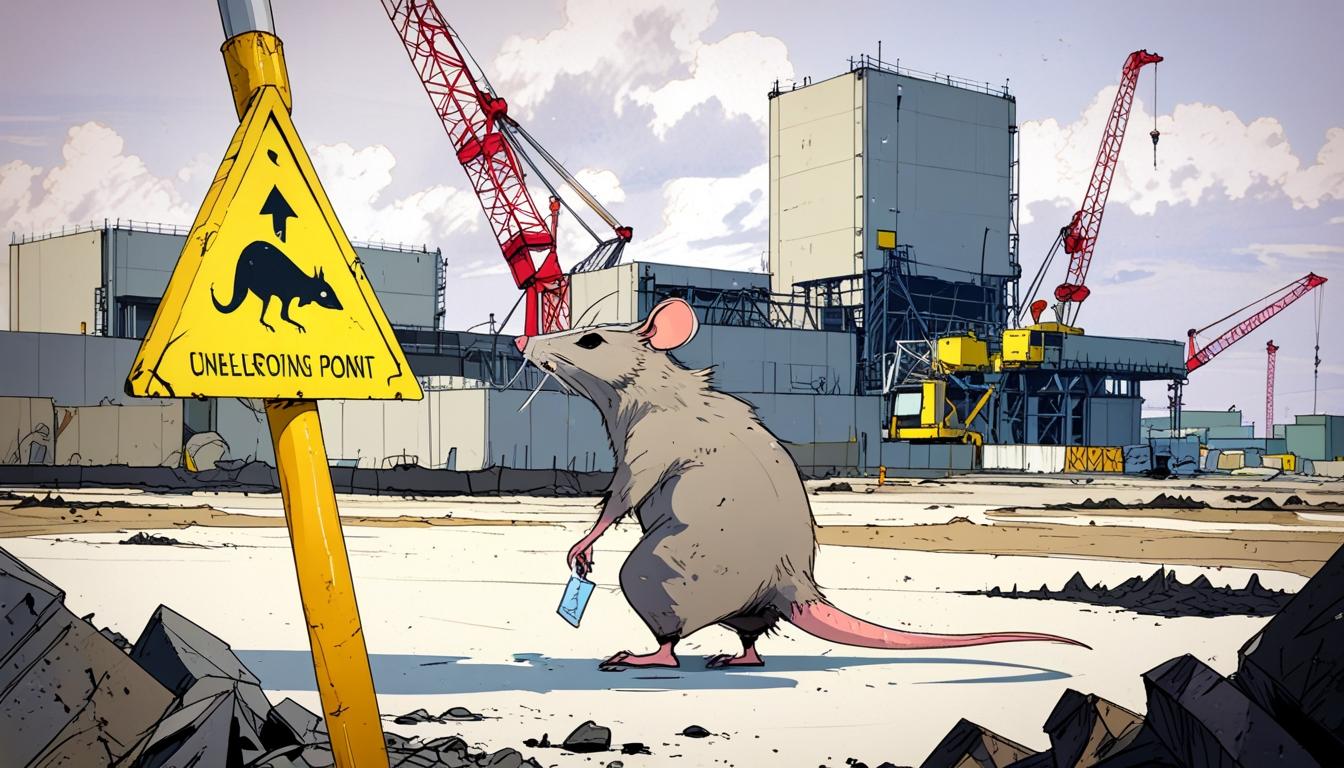At the Hinkley Point C nuclear construction site in Somerset, England, a significant rodent infestation has emerged, prompting increased safety concerns and operational disruptions. Reports indicate that hundreds of rats have infiltrated the site, an event that has raised alarms among workers and critics of nuclear energy alike. While the facility does not yet contain radioactive materials, the presence of rodents in such a sensitive environment poses notable risks, including potential contamination of food supplies, damage to essential cabling, and interference with temporary insulation.
This incident comes as Hinkley Point C is a critical component of the UK’s strategy to meet its low-carbon energy targets, expected to generate approximately seven per cent of the nation's electricity upon completion. However, the project has now seen its estimated costs soar from an initial £18 billion ($24.01 billion) to over £32 billion ($42.68 billion). Contributing factors to this cost escalation include delays due to the COVID-19 pandemic, supply-chain issues, and labour disputes, with the recent rodent problem creating additional complications for project timelines and feasibility.
The challenges faced at Hinkley Point C echo historical incidents involving pest issues at nuclear facilities globally. Notably, a rat at Japan’s Fukushima Daiichi plant in 2013 was implicated in causing a short-circuit that resulted in a failure of the cooling system for over 30 hours. Such episodes highlight the unpredictable interactions between wildlife and high-security environments, further complicating public perception of nuclear safety amid historical incidents like Chernobyl and Three Mile Island.
In response to this urgent situation, EDF Energy has deployed pest control measures to manage the rodent population. These measures include placing bait stations and sealing rubbish chutes across the expansive 430-acre construction area. The company is also closely monitoring hygiene in the workers' canteen and has committed to providing weekly progress reports to trade unions. Failure to effectively manage the rodent infestation could lead to partial shutdowns and further delays in a project already beset by challenges.
Industry experts underline the necessity for comprehensive pest management strategies as a core element of logistical planning for large-scale projects. Paul Sheffield, a former construction CEO, emphasised that the effective management of waste is vital to prevent wildlife attraction—concerns that become increasingly pressing as Hinkley Point C prepares to increase its workforce to more than 15,000.
As the UK government works to bolster public trust in nuclear energy, the Hinkley Point C rodent issue illustrates the complexities involved in achieving ambitious energy targets while ensuring safety and efficiency in construction practices. The incident serves to reinforce the notion that the progression of nuclear energy in the UK will depend not solely on technological advancements but also on adeptly navigating environmental and logistical challenges that can significantly impact public confidence and project timelines.
Looking forward, the lessons learned from the Hinkley Point C experience will be critical in shaping how future nuclear projects approach pest management and overall operational preparedness. As the nuclear sector confronts these ongoing challenges, the outcome of such incidents may well influence the broader narrative surrounding the viability and safety of nuclear energy in contributing to global energy demands.
Source: Noah Wire Services
